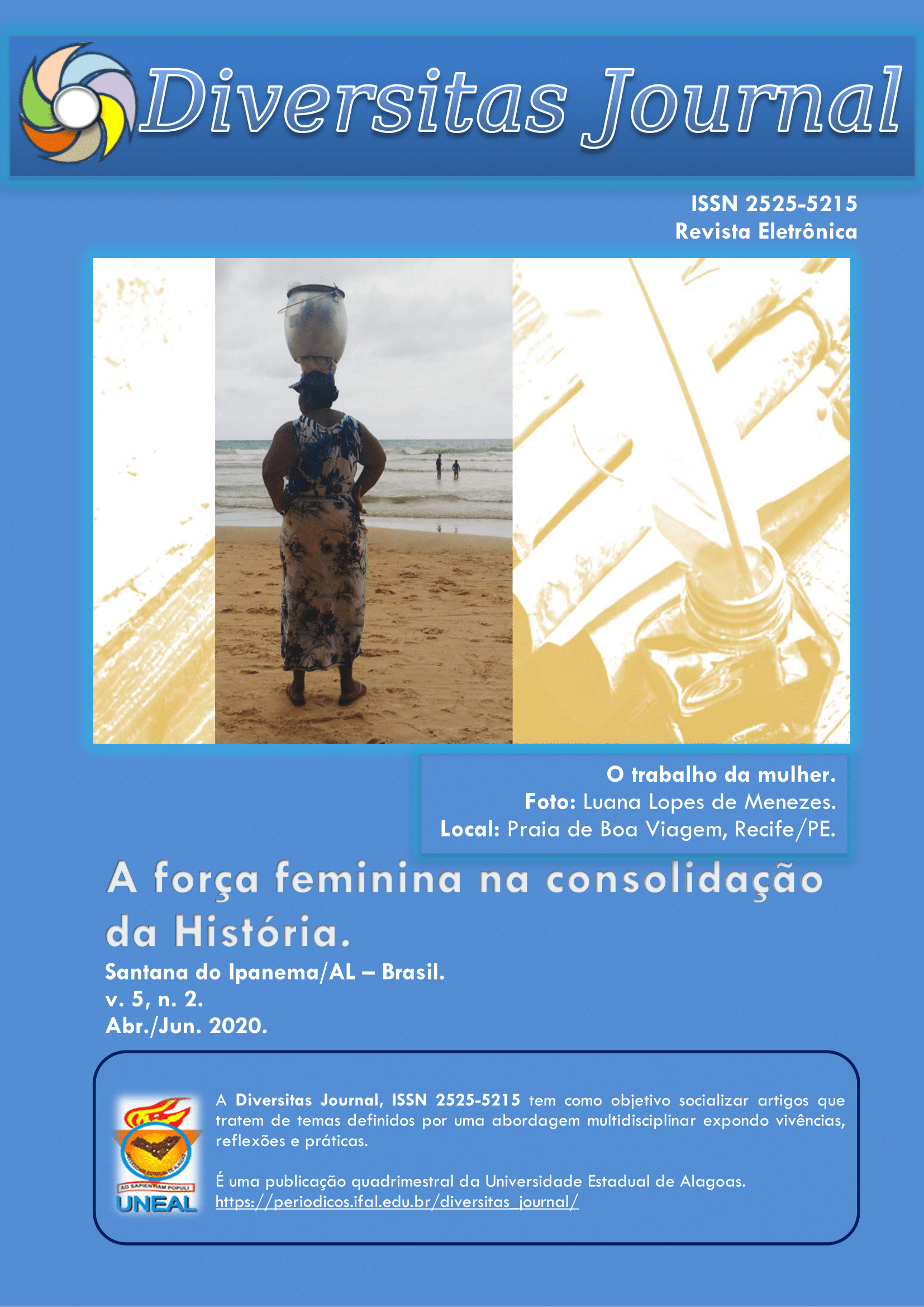Dormência tegumentar de sementes de baobá: Escarificação química
DOI:
https://doi.org/10.17648/diversitas-journal-v5i2-1111Resumo
RESUMO: O baobá é uma árvore de múltiplos propósitos e propriedades biológicas; sendo suas raízes, tubérculos, galhos, frutos, sementes, folhas e flores comestíveis e empregados como ingredientes comuns em pratos tradicionais na África. Objetivou-se avaliar a escarificação química com ácido sulfúrico e soda cáustica na superação da dormência tegumentar em sementes de baobá. O delineamento foi o inteiramente casualizado em esquema fatorial 2 x 4 + 1 (escarificação química: ácido sulfúrico (H2SO4) e soda cáustica (NaOH) x tempos de imersão: 2; 4; 6 e 8 horas + sementes não tratadas (controle)). A eficácia dos tratamentos foi avaliada por meio da emergência, índice de velocidade e tempo médio de emergência, diâmetro do coleto, comprimento e massa seca da parte aérea e do sistema radicular das plântulas normais. Os resultados mostraram que as escarificações químicas com soda cáustica e ácido sulfúrico pelos períodos de 2; 4; 6 e 8 horas causaram a ruptura do tegumento das sementes, o que contribuiu para aumentar a emergência de plântulas de baobá, contudo, a emergência das plântulas das sementes escarificadas com soda cáustica por 2 horas não diferiu dos valores das plântulas oriundas das sementes não tratadas. A soda cáustica e o ácido sulfúrico foram eficientes na superação da dormência tegumentar de sementes de baobá, contudo, a soda cáustica é mais indicada por ser de fácil aquisição e de baixo custo.
PALAVRAS-CHAVE: Adansonia digitata, ácido sulfúrico, soda cáustica, desenvolvimento de plântulas.
Métricas
Downloads
Publicado
Como Citar
Edição
Seção
Licença
Copyright (c) 2020 Ariana Veras de Araújo, Monalisa Alves Diniz da Silva, André Pereira Freire Ferraz, Ana Carla Vieira de Brito

Este trabalho está licenciado sob uma licença Creative Commons Attribution 4.0 International License.
O periodico Diversitas Journal expressa que os artigos são de unica responsabilidade dos Autores, conhecedores da legislação Brasileira e internacional. Os artigos são revisados pelos pares e devem ter o cuidado de avisar da possível incidencia de plagiarismo. Contudo o plagio é uma ação incontestavel dos autores. A Diversitas Journal não publicará artigos com indicios de Plagiarismos. Artigos com plagios serão tratados em conformidade com os procedimentos de plagiarismo COPE.
A violação dos direitos autorais constitui crime, previsto no artigo 184, do Código Penal Brasileiro:
“Art. 184 Violar direitos de autor e os que lhe são conexos: Pena – detenção, de 3 (três) meses a 1 (um) ano, ou multa. § 1o Se a violação consistir em reprodução total ou parcial, com intuito de lucro direto ou indireto, por qualquer meio ou processo, de obra intelectual, interpretação, execução ou fonograma, sem autorização expressa do autor, do artista intérprete ou executante, do produtor, conforme o caso, ou de quem os represente: Pena – reclusão, de 2 (dois) a 4 (quatro) anos, e multa.”


















